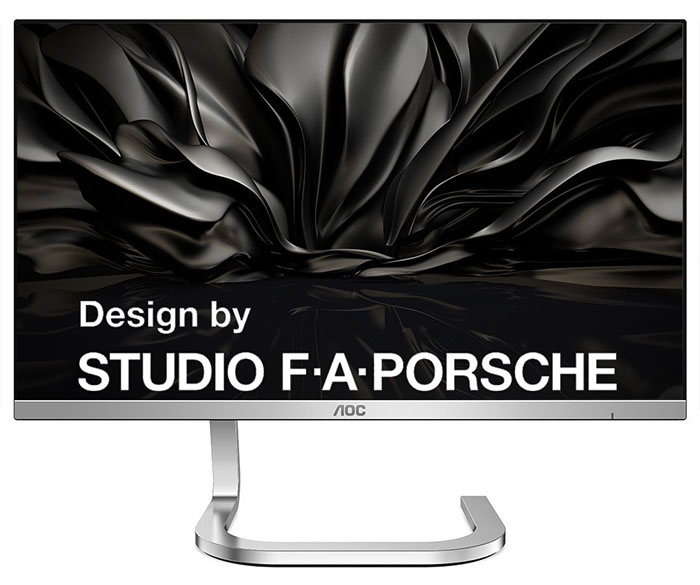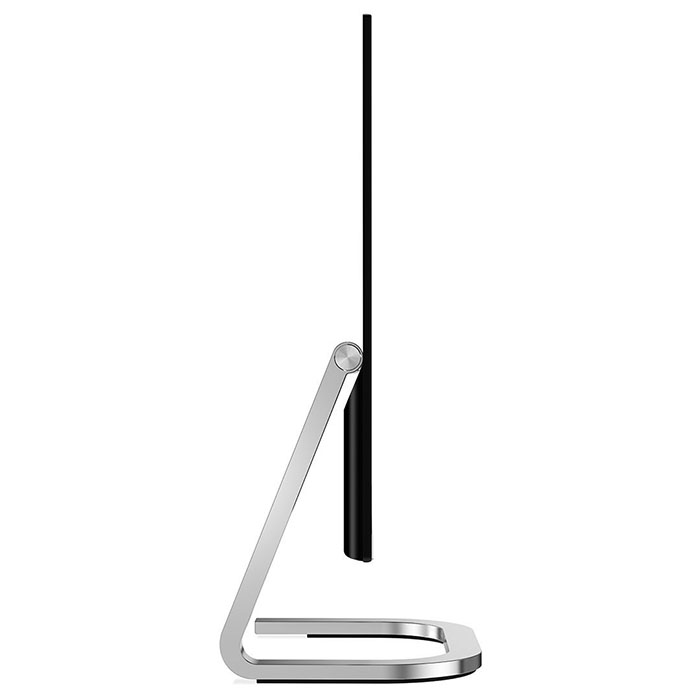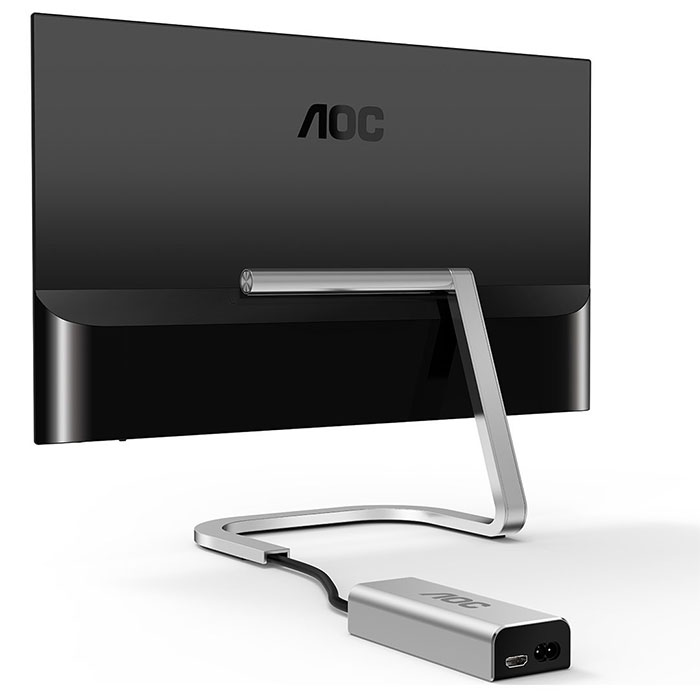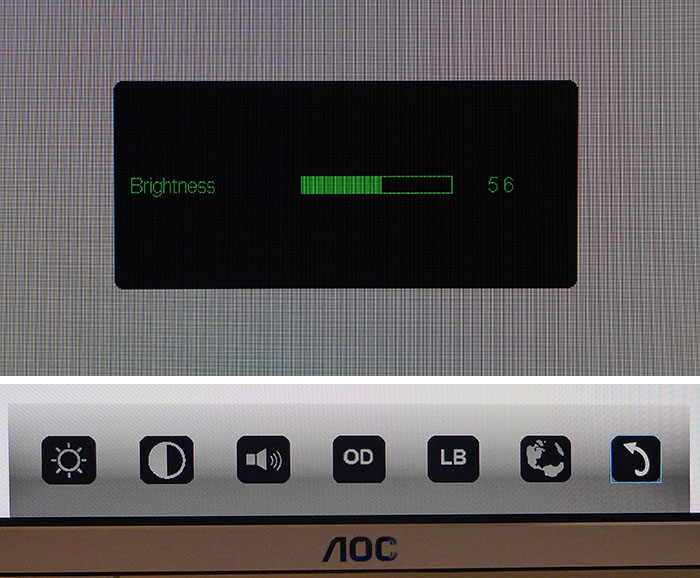Early Verdict
The PDS271 is not a feature-rich powerhouse but its beautiful styling may win over some users. DCI-P3 color is a nice asset that will add some much-needed punch to an image of average contrast and its out-of-box performance is on par with the competition. While we’d like to see at least QHD resolution in a 27” screen, it provides good clarity and is a pleasure to work with. Style-conscious buyers will certainly want to consider this Porsche-designed display.
Pros
- +
Exceptional styling
- +
Build quality
- +
Cable management
- +
DCI-P3 color
Cons
- -
No calibration options
- -
Out-of-box grayscale tracking
- -
FHD resolution
- -
6-bit+FRC color depth
Why you can trust Tom's Hardware
Features & Specifications
This is not our first review of a monitor that makes style its top priority. But we haven’t had the opportunity to examine a display that comes from one of the world’s most-noted design houses, Studio F.A. Porsche. Yes, we’re talking about that Porsche, although the firm produces many products that have nothing to do with automobiles. Founded in 1972, it has provided sleek and modern styling for a wide variety of items ranging from eyeglasses to furniture.
Often a step ahead of the competition in the physical design of its displays anyway, AOC has enlisted the services of Studio F.A. Porsche to create a new interpretation of the computer monitor. The PDS271 is a 27” IPS panel with FHD resolution, a super thin form factor, and a unique power brick feature that combines power and video into a single cable that emanates from the elegantly curved strip of metal that forms the base and upright. It is unquestionably beautiful, but how does it perform? Let’s take a look.
Specifications
Yes, the resolution is indeed 1920x1080 pixels and the color depth is 6-bits with FRC. And that is unfortunate, because the PDS271 has several other positives that place it ahead of the competition. The panel comes from LG Display and is an AH-IPS part with a white LED arrayed at the bottom edge. But its native color gamut sets it apart from most business-class screens. Sporting DCI-P3, it delivers vibrant and saturated color that exceeds the sRGB volume by almost 20%.
It completely eliminates cable clutter by combining the power and video feeds into a single wire that runs from a stylish power brick to a jack hidden under the all-metal base. It’s a unique approach that offers an ideal solution to those seeking a completely uncluttered desktop. In fact, most aspects of the PDS271 are uncluttered. There’s only a single button to control the OSD, which has few options outside brightness and contrast.
It’s an interesting package that will appeal greatly to some users, especially those who enjoy the cachet of designer products. But on paper, it falls short in a couple of key areas.
Packaging, Physical Layout & Accessories
The carton shows a photo of the monitor on a black background with the proclamation “The Splendour of Luxury.” It’s certainly enticing, but the word “Porsche” appears nowhere. That’s a bit of a head-scratcher since it’s the primary selling point of the PDS271.
Internal protection is more than adequate for the completely assembled monitor. You’ll be amazed at its light weight and supreme thinness. It almost reminds us of an OLED panel as we remove it from the box. The special power brick and required cable are included of course, along with an HDMI connector. Drivers and documentation are provided on an enclosed CD.
Get Tom's Hardware's best news and in-depth reviews, straight to your inbox.
Product 360



The PDS271 exudes high style from its simple and elegant design. There are no extraneous angles or curves, only what’s necessary for each piece to flow into the next. Form follows function in a clear expression of the German Bauhaus school. The panel is super thin for two-thirds of its height, culminating in a small bulge at the bottom for the internal components. The all-metal upright and base are a single piece interrupted only by a cylindrical hinge that offers 21.5° back tilt and 3.5° front. There are no height or swivel adjustments. Nor do you get any mounting options. The pieces are permanently attached with hidden hardware.
The front layer appears frameless, but when an image is present, you can see a 7mm bezel around the top and sides. Across the bottom is a metal strip, 20mm in width, and it has a polished edge and an AOC logo as its only feature. Control is facilitated by a single button. Press it once to power up. Another click brings up a small OSD.
While many of us dream of a wireless world, reality means we still need cables to carry power and video signals reliably. AOC has managed to cut this requirement to a single proprietary wire and a nicely styled brick that accepts both AC and a single HDMI input. It is then connected to a hidden jack in the PDS271’s base. You can see how it works in the third photo above. Next to the panel’s single button is a 3.5mm headphone jack. There are no built-in speakers, nor are there USB ports.
OSD & Setup
The OSD is about as minimal as it gets. In addition to brightness and contrast, you get three-level controls for low blue light and overdrive. The feature list is rounded out by a volume control and language choices.
When you press the button, the menu appears at the bottom center of the screen. Another press cycles through the icons. When you’ve selected the desired function, wait a moment and a small box appears at the center of the screen. Press the button to raise the value until it hits its max and cycles back to the bottom. It’s a little clunky, but if you’re going to have a display controlled by one key, we can’t think of a better way to do it.
Setup is pretty much limited to choosing the desired output level. There are no picture modes, color temps, or gamma presets. Maxing the brightness slider yields around 275cd/m2 while a setting of 56 corresponds to 200cd/m2. Contrast is set correctly so it should not need adjustment. The only other option worth visiting is the overdrive. A medium setting provides good blur reduction without excessive ghosting.
MORE: Best Gaming Monitors
MORE: Best Professional Monitors
MORE: How We Test Monitors
MORE: How To Choose A Monitor
MORE: All Monitor Content

Christian Eberle is a Contributing Editor for Tom's Hardware US. He's a veteran reviewer of A/V equipment, specializing in monitors. Christian began his obsession with tech when he built his first PC in 1991, a 286 running DOS 3.0 at a blazing 12MHz. In 2006, he undertook training from the Imaging Science Foundation in video calibration and testing and thus started a passion for precise imaging that persists to this day. He is also a professional musician with a degree from the New England Conservatory as a classical bassoonist which he used to good effect as a performer with the West Point Army Band from 1987 to 2013. He enjoys watching movies and listening to high-end audio in his custom-built home theater and can be seen riding trails near his home on a race-ready ICE VTX recumbent trike. Christian enjoys the endless summer in Florida where he lives with his wife and Chihuahua and plays with orchestras around the state.
-
Raven_BC It seems we are close to reaching the summit of stupidity. "Porsche design" - what to f...? Just to get higher price and destroy more environment or maybe there is a single reasonable reason to make such a crap? Almost all the electronics is just a crap today and they seem to be working on a more sophisticated crap. All the companies producing that stuff seem to compete is a shit production and who destroys the Nature quicker and on a bigger scale. Really? Are we that stupid, blind, deaf, etc? Turn off your tv and radio and turn on your critical thinking Guys. Enjoy Your Life :)Reply -
dscribner111 You didn't just sit and read through an entire article of "crap", complain everything is crap, then chastise us for enjoying this crap, only to say turn off tv and radio to enjoy life?Reply
Ummm, ok? -
Ieatbrains83 Raven what are you even doing on toms hardware if you have such a problem with tech. The one. Cable idea is sharp but other than that who cares about another 1080 monitor it's not that cool.Reply -
tamalero The monitor seems pretty mediocre. Seems they put all the research and design. And backed it with zero substance and functionality compared to the competitors.Reply -
canadianvice I basically only want something that doesn't look like I pulled it out of a garbage dump. Porsche design, I guess, is just a bit too far beyond my uncultured plebian tastes.Reply
Or at least, not for the amount of extra money they're likely to ask for it. -
AlistairAB The fact that the concluding page doesn't mention the word HDR is telling. DCI without HDR and 10 bit support isn't worth it.Reply -
Flying-Q I saw 'Porsche' and thought this might be good, then I read 1920x1080 and 6bit and was immediately turned off. I have a couple of clients who would lap this thing up, except I would never let them know it existed. I hope they never find out.Reply
My first thought on seeing the rear view was 'that will sag eventually due to the off centre mounting point.' I like the single cable design, though if you turn the power brick sideways in the natural 'behind-the-stand' orientation the AOC logo will be upside down to the user. It will, however be the right way around to the user's client in a sales room, and all of the rear is clean enough for that environment. I still won't tell my clients that it exists though.

